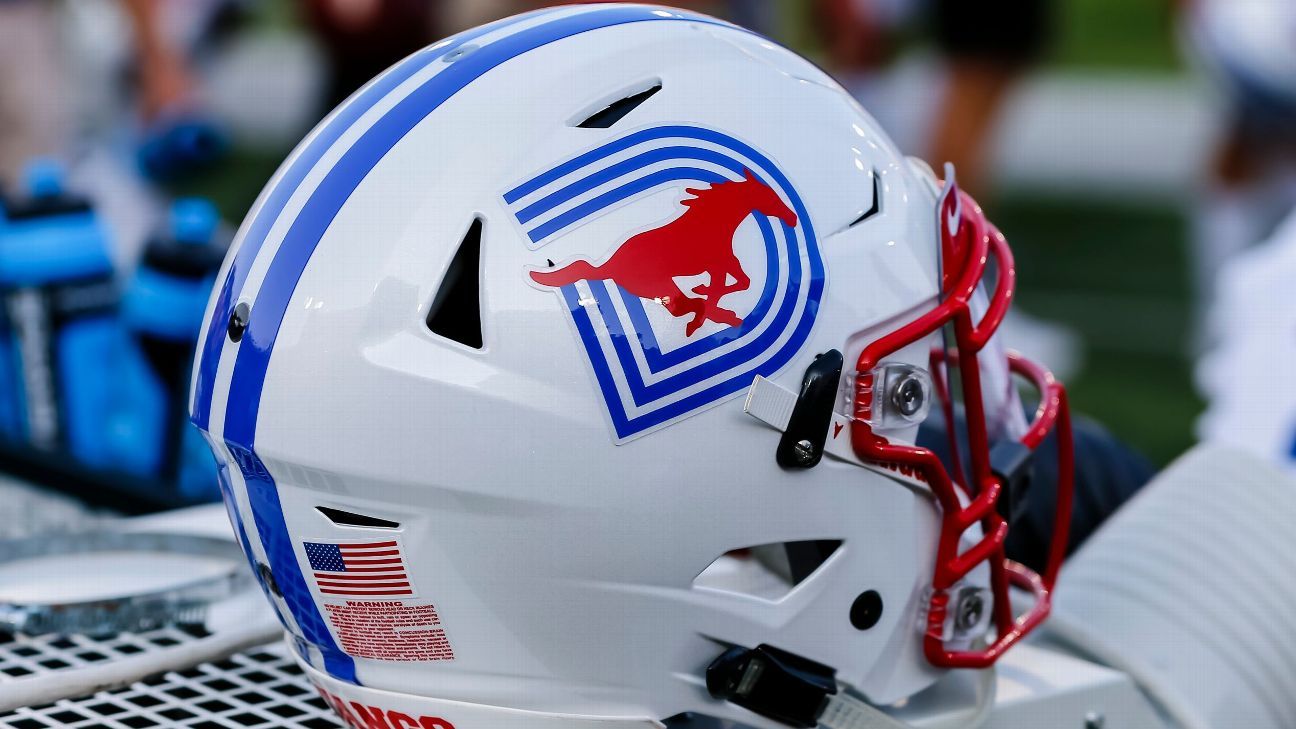The College Football Playoff management committee unanimously agreed upon an undisclosed amount of money for incoming ACC member SMU that will go to the conference, but it’s still less than the revenue the CFP typically distributes to Power 5 schools, CFP executive director Bill Hancock said Monday.
The 11 presidents and chancellors who control the playoff must still unanimously approve SMU’s revenue distribution for the next two years, which are the final two seasons of the current 12-year contract. SMU will eventually receive the full share when the new contract is done.
“I think everybody in the room felt like it was a fair accommodation,” Hancock said. “They’ve spent a long time talking about it — over three meetings.”
The decision is significant because in the past, schools that made the leap from a Group of 5 conference to a Power 5 league also saw an increase in CFP revenue from roughly $1 million to $6 million. In 2022, the CFP voted to give full Power 5 revenue to incoming Big 12 schools UCF, Cincinnati, Houston and BYU. SMU and the ACC were under the impression they would get the same.
Hancock declined to say specifically what the monetary agreement was, and ACC commissioner Jim Phillips declined to comment after the meeting. SMU athletic director Rick Hart did not immediately return a request for comment.
The 10 FBS commissioners and Notre Dame athletic director Jack Swarbrick, who joined Monday’s CFP meeting in Dallas by Zoom, have been discussing SMU’s revenue situation for months. SMU had already agreed to forgo ACC television revenue for its first nine years in the league.
There is already a glaring CFP revenue gap between the Power 5 (Pac-12, ACC, SEC, Big 12 and Big Ten) and the Group of 5 (Conference-USA, Mid-American, Mountain West, Sun Belt and American Athletic Conference). Currently, about 80% of the CFP revenue goes to the Power 5, while 20% is allocated to the Group of 5. Now the commissioners have to determine how it will be shared amongst the “Power 4,” as the Pac-12 is on the verge of extinction following defections to other leagues.
With the Pac-12 down to Washington State and Oregon State, the CFP’s model for how teams qualify for the new 12-team playoff this fall remains on hold. Except for the Pac-12, there is unanimous support for a 5+7 model that rewards the five highest-ranked conference champions plus the next seven-highest ranked teams. Hancock said that decision is with the board, where Washington State president Kirk Schulz represents the league with a vote on an issue that needs unanimity for approval.
“It’s not done yet because the Pac-12 isn’t prepared to vote on it,” Hancock said.
Schulz has declined comment.
